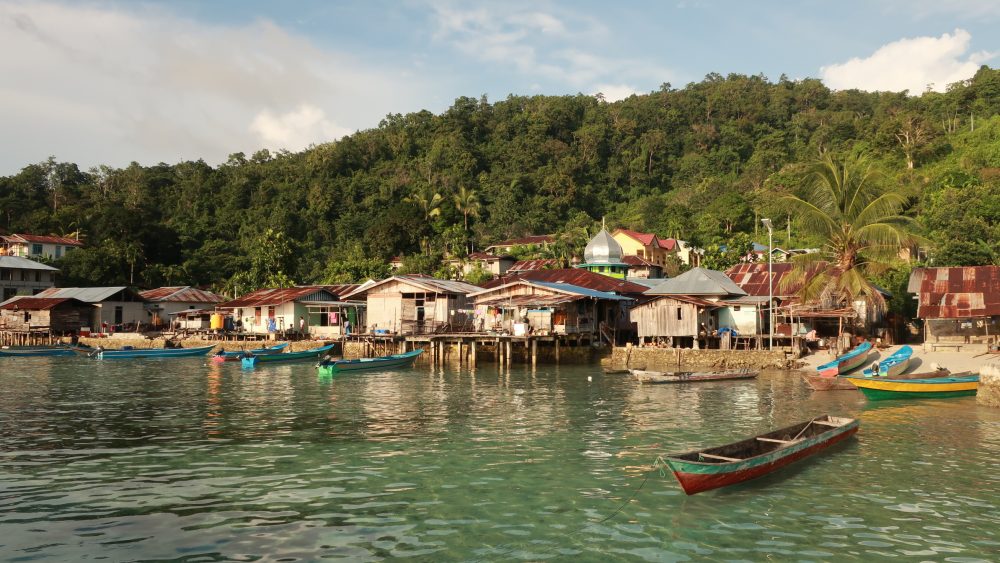In January, I (Eline) defended my PhD thesis, a description of a small language spoken in eastern Indonesia. The language is called Kalamang and has 130 speakers. I worked on describing its features for more than five years, and here I want to share my two favourite features with you.
1. Kalamang doesn’t have a verb for ‘to give’
In most languages, a give-construction has four elements:
- a Giver
- a Recipient
- a Gift
- a verb
Although it is arguably one of the basic verbs – one that one absolutely needs in every language because it expresses such a basic action – Kalamang doesn’t have a verb that means ‘to give’. (More precisely, the verb ‘to give’ is a zero morpheme, but that’s not so important here.) And not only the verb is absent in a Kalamang give-construction. Usually, the Gift is not expressed either, because it can be understood from the context. So if a Kalamang speaker makes a give-construction, they only have to state the Giver and the Recipient. If the Recipient is a noun, such as ‘fish’ or ‘mother’, the recipient is marked with a benefactive case marker –ki ‘BEN’:
ka marua sor-ki
you go.seawards fish-BEN
‘You go seawards and give it to the fish.’
an ema-ki
I mother-BEN
‘I give it to mother.’
If the Recipient is expressed as a pronoun, such as ‘I’ or ‘he’, this benefactive case marker is ungrammatical. We then get super minimalistic constructions like:
ka an-nin
you I-not
‘You didn’t give it to me!’
ma ma
he he
‘He gives it to him.’
As an outsider, I spent a long time looking for the verb. How can a Kalamang listener know that the speaker is talking about something being given to someone when all they hear is ‘he he’? Finally, I understood that it is the absence of a verb that communicates that the speaker is talking about giving.
2. Kalamang curses are brutal
The first time I recorded a curse in Kalamang, it was when a mother ushered her child out of the house. She said the following:
yuonba kat min-tolmaretkon
sun you liver-cut.out
‘May the sun cut out your liver!’
So the next time I sat down with my language consultant I asked her if this was a normal way of cursing. Oh yes, she said, and continued to give me a list of other curses. Instead of sun, you can put one of the following words:
- malaikat ‘angel’
- penyakit ‘illness’
- damir ‘taboo’
- sileng ‘a cursed fish’
And instead of using the verb for liver-cutting, you may use the verb for consuming. I thought it was pretty brutal to use these curses for children, but for the Kalamang speaker this seems unproblematic. Perhaps the fact that children don’t learn Kalamang anymore (instead, they learn the regional lingua franca Papuan Malay) plays a rule.
Want to know more?
A grammar of Kalamang: The Papuan langue of the Karas Islands can be downloaded here. Give-constructions on page 313, cursing on page 481.
Swearing and cursing in 24 languages: Magnus Ljung – Swearing: A Cross-Cultural Linguistic Study.

